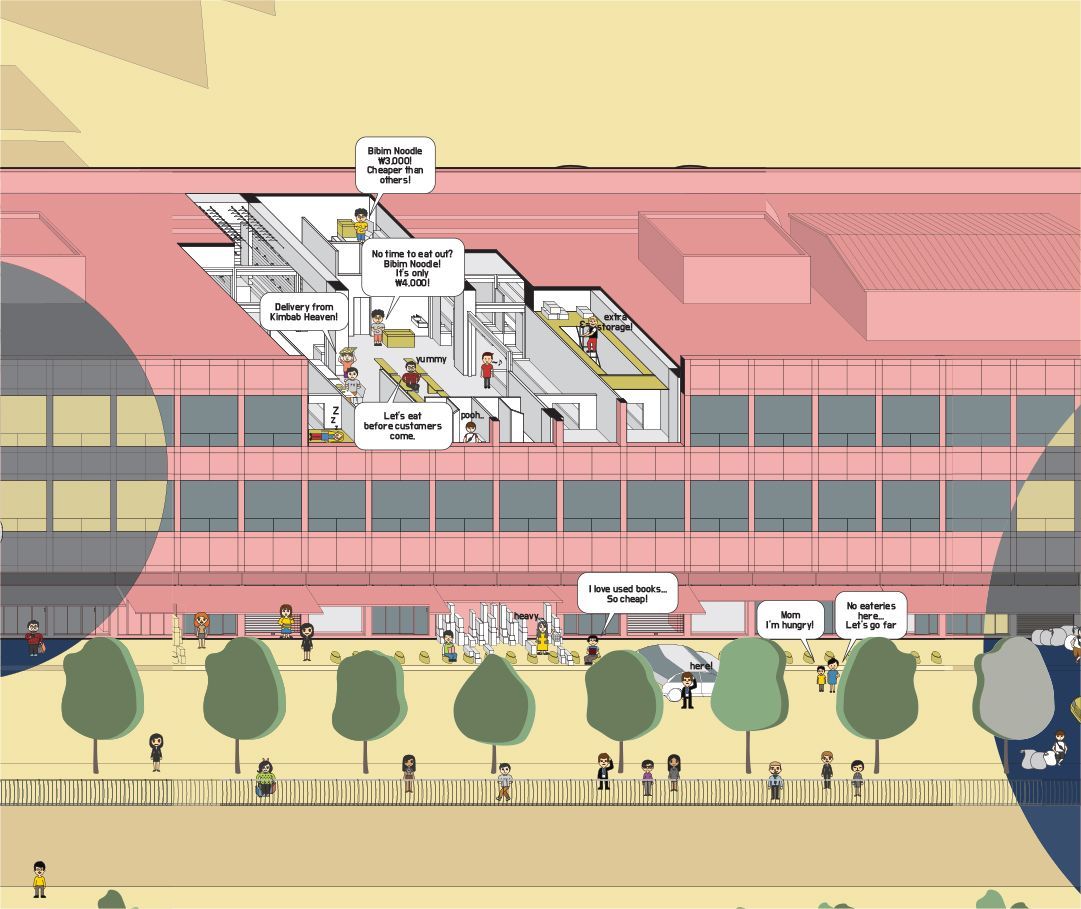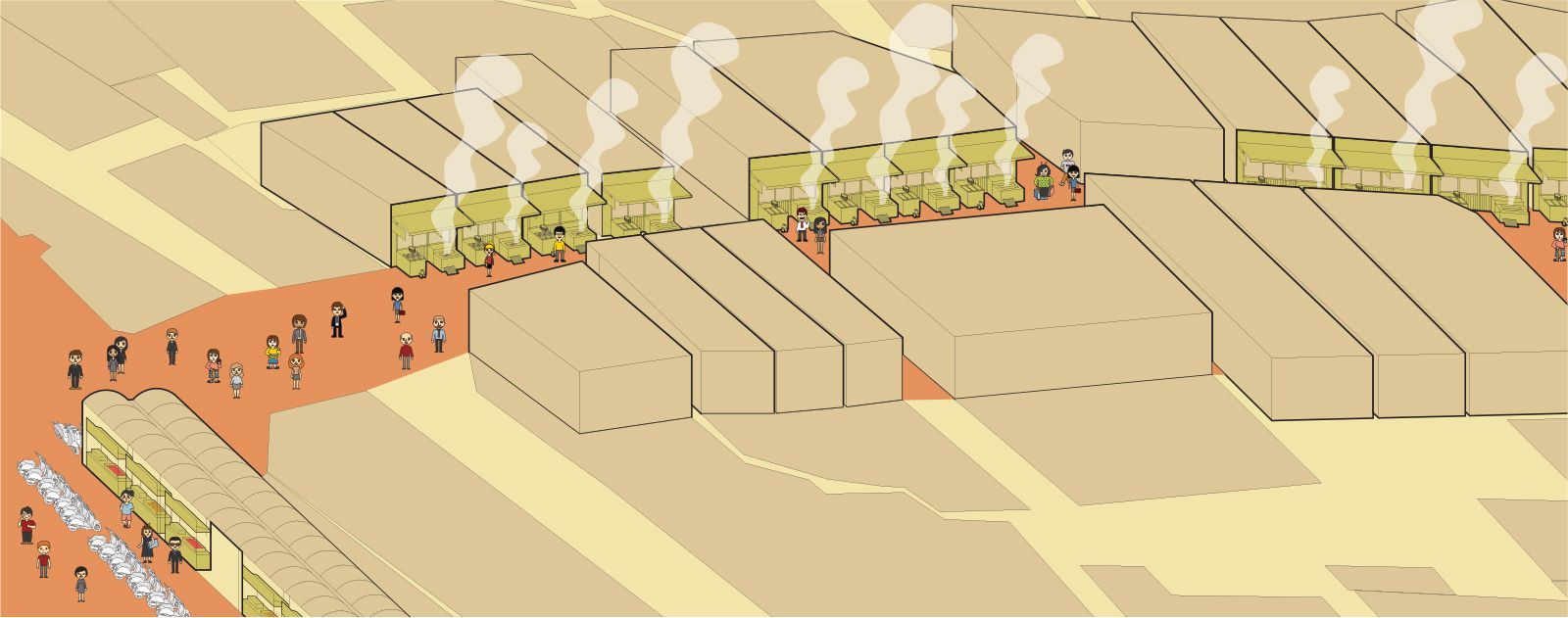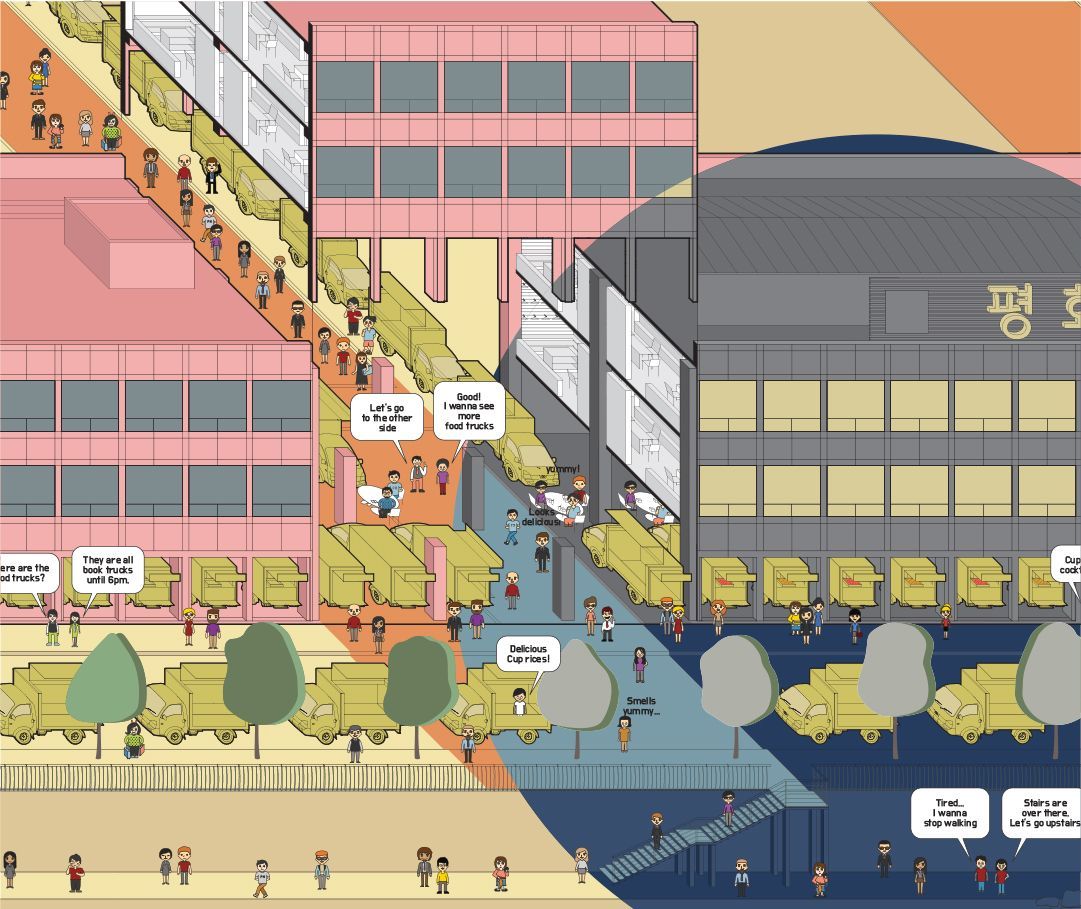


FOOD OUTSOURCING
While most traditional markets have food stalls co-existing with wholesale shops, Pyounghwa Shijang frame has a narrow width of 12 meters when compared to its length of 600meters. This spatial configuration only allowed shops and storage to line up the inner corridor and pushed out the supporting functions such as food stalls, amenity, and service to the outside of the building premise. It is easy to find many food stalls selling grilled mackerel, and chicken soup along the northern side of the building. There are also more snack-oriented food stalls lined up along the bridge crossing the Cheong-gyecheon from the center of the building.
The wholesale merchants however, cannot leave their stores for meal while running its 24 hour cycle. The meals are therefore delivered from food stalls that had been pushed out and outsourced to other regions north of the building. However, delivery has its limitations depending on the location and time of the day. This is why it is not hard to find merchants using the temporary noodle bars squeezed in the fragmented surplus spaces next to stairs or toilets. This helps us understand what kinds of functions are much needed in the building.

TRAVERSAL CONNECTION BY SHOP TRUCKS
The DDP area recently has gained more public character since the introduction of street vendors along the periphery of the building. We can even recall the liveliness of the pre-demolition Dongdaemun stadium when it was lined up with rows of food stalls and street vendors. It was a good example of how food stalls can generate public involvement and fill in the lack of architectural programs at the same time.
Another particular commercial activity hosted by Pyounghwa Shijang are used bookstores. They are mostly aligned on the northern side of the ground floor level that faces the Cheong-gye chun. In contrast to the garment shops that operate in 24 hour cycles, the used bookstores open from morning to dusk, and closes during night time. Such co-existence of garment shops and used bookstores provides us with a hint that the spaces can be utilized more efficiently and effectively if we introduce time-sharing and space-sharing to this zone.
The 600m long Pyounghwa Shijang structure appear as an impermeable barrier: a barrier that separates the shopping district on the south of the building from the Cheong-gye chun on the north. However, it is important to observe how the actions made by public activities in Cheong-gye chun, and shopping activities of the tourists in the south of the building can be shared due to their synchronized cycle of events. The proposal therefore is to empty out a few 6meter span bays and transform them into temporary cartridge for foodtrucks at night and bookmobiles during the daytime. Each 6meter bay will host two trucks side by side and form a pathway that connects the southern side of the building to its northern side and eventually into Cheong-gye chun.
Copyright © uosarch.ac.kr., Some rights reserved.